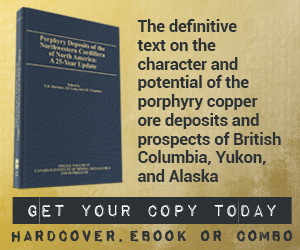Library Magazine Articles Let the discussion begin: Are potash technical reports meeting the intent of NI 43-101?
Let the discussion begin: Are potash technical reports meeting the intent of NI 43-101?
Dave Mackintosh - Aug 2011
The continued “potash rush” in Saskatchewan has resulted in several NI 43-101 technical reports from junior exploration projects, majors wishing to enter the potash industry and established mine operators. However, since the “Best Practice Guidelines” for potash have not been revisited since 2003, the rather broad guidelines are resulting in significant variation in how mineral resource and mineral reserve (MRMR) estimations are prepared and disclosed. The following discussion raises more questions than answers and is an attempt at stimulating further discussion of potash best practices that may result in a Potash Guideline useable by the SEC and CSA.
In June 2010, a prominent Saskatchewan newspaper reported that one company had released a potash report “indicating X million tonnes of measured resource, X million tonnes of indicated resource and X million tonnes of inferred resource.” In the same article, the paper stated “another junior mining company is developing a project which reportedly has X million tonnes of recoverable resource.” How does the investor make reasonable comparisons of value? Can the investor be confident that definitions are being applied consistently?
The CIM Definition Standards on Mineral Resources and Reserves (CIM Standards) defines a mineral resource as having “reasonable prospects for economic extraction.” This does not implicitly state that one must apply an extraction rate, and many Qualified Persons (QPs) feel this is the job of the mining engineer at the prefeasibility stage and not part of a resource estimate.
The majority of established mine operators, in particular PotashCorp, report an in-place tonnage for resources and apply an extraction rate only to reserves. Among the companies at the development stage, BHP Billiton reports an in-place tonnage resource for the Saturn project and states that extraction rates will be applied when reporting reserves. Potash One applies an extraction rate in their resource estimate. The majority of exploration-stage companies appear to apply extraction rates to resources. If an extraction rate is applied, what rate should a QP use? Published extraction rates for conventional Saskatchewan potash mines vary from a low of 23 per cent to a high of 33 per cent. An extraction rate has never been published for a Saskatchewan potash solution mine.
At a minimum, most conventional Saskatchewan operating mines consider that portion of the deposit that has “reasonable prospects for economic extraction” has a minimum thickness, is of good grade and has sufficient salt cover. For solution mines, it must be thick, have high temperature and a lack of carnallite.
The QP should provide information on the risks regarding the key assumptions of recoveries and energy costs from lower temperature solution mining prospects, safety and rehabilitation costs, etc. associated with deeper conventional mining prospects to assess reasonable prospects of economic extraction. As well, information should be provided on what must happen in the marketplace to make the prospect viable, such as reduced capacity as the easier deposits are mined out, increased demand and/or prices.
Comparisons may be drawn between the low seam complexity of potash and some coal deposits. The CIM Standards refers to the 1989 GSC Paper 88-21, “A Standardized Coal Resource/Reserve Reporting System for Canada,” which states a “resource tonnage is always calculated on an in-place basis; that is, mining or other recovery factors are not applied.
A review of several technical reports shows that the “measured” category largely utilizes 3D seismic coverage and radius of influence (ROI) varying from 0.8 to 2.5 kilometres. The “indicated” ROI ranges from 1.6 to 2.5 kilometres, usually with 2D; however, the “inferred” category ranges from 3.2 to more than eight kilometres.
GSC Paper 88-21 suggests that for relatively flat lying or gently dipping (0 to 5 degree) deposits where drill hole data can be correlated with confidence, the distance from the nearest data point for resources classified as measured be <0.8 kilometres, indicated 0.8 to 1.6 kilometres, and inferred 1.6 to 4.8 kilometres. It must be remembered that these guides were put forth prior to the widespread use of 3D seismic programs.
Drill hole spacing from past exploration programs are often used as a guide to current programs. These exploration programs generally used drill hole spacing varying from two to four kilometres, with a few outliers at five to six kilometres.
In general, the ROI should be great enough to outline a contiguous area and not produce “spotted dogs” or donuts in the measured and indicated categories. Where large ROIs have been used, the inferred category approaches 90 per cent of the total resource and only 10 per cent can be used to support mine planning and evaluation of the economic viability of the deposit. Where more modest ROIs have been used, the opposite is true with the measured and indicated categories making up almost 90 per cent of the resource, giving any engineering company charged with preparing scoping studies, prefeasibility and feasibility studies some confidence that they are working with defensible and meaningful estimates.
Regulators, report reviewers, investors and, for that matter, many engineering companies, appear unaware of the technical complexities of deep conventional mining or the energy and water needs facing those attempting to mine lower temperature solution mine properties. It is hoped that this discussion will possibly raise some interest in developing updated best practices for potash.
The points raised in the article are solely the opinion of the writer.
Author
Dave Mackintosh, an independent consulting geologist, is the author of numerous papers on potash, rock mechanics, mining, and geology.

.png)
